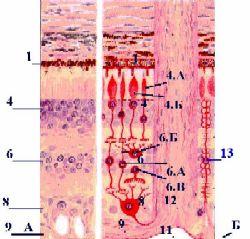
The drug of the century - part 1
Only salicylic acid is the right medicine. In 1838 an Italian chemist Rafaele Piria he obtained this compound in its pure form, and in 1874 a German chemist Herman Kolbe developed a method for its industrial production.
At the same time, salicylic acid was used in medicine. However, the drug had a strong irritant effect on the gastric mucosa, which led to chronic gastric diseases and ulcers. It was the side effects of taking salicylic acid preparations that prompted the German chemist Felix Hoffmann (1848-1946) to find a safe substitute for the drug (Hoffmann's father was treated with salicylic acid for rheumatic ailments). "Bullseye" was supposed to get its derivative - Acetylsalicylic acid.
The compound is formed by esterification of the OH group of salicylic acid with acetic anhydride. Acetylsalicylic acid was obtained earlier, but only the pure preparation obtained by Hoffmann in 1897 was suitable for medical use.
Particle models of salicylic acid (left) and acetylsalicylic acid (right)
The manufacturer of the new drug was a small company Bayer, engaged in the production of dyes, today it is a global concern. The medicine was called aspirin. This is a registered trademark ®, but it has become synonymous with preparations containing acetylsalicylic acid (hence the commonly used abbreviation ASA). The name comes from the words "acetyl“(letter a-) and (now), that is, meadowsweet - a perennial with a high content of salicin, also used in herbal medicine as an antipyretic. The ending -in is typical for drug names.
Aspirin was patented in 1899 and was hailed almost immediately as a panacea. [packaging] She fought fever, pain and inflammation. It was widely used during the famous Spanish flu pandemic, which claimed more lives in 1918-1919 than the just ended World War I. Aspirin was one of the first drugs to be sold as water-soluble tablets (mixed with starch). After the Second World War, its beneficial effect in the prevention of heart disease was noticed.
Despite being on the market for over a century, aspirin is still widely used in medicine. It is also the drug produced in the largest quantities (people consume more than 35 tons of the pure compound worldwide every day!) and the first fully synthetic drug not isolated from natural resources.
Salicylic acid in our laboratory
Time for experiences.
First, let's learn about the characteristic response of aspirin protoplasty - salicylic acid. You will need salicylic alcohol (disinfectant sold in pharmacies and pharmacies; salicylic acid 2% water-ethanol solution) and a solution of iron (III) chloride FeCl.3 with a concentration of about 5%. Pour 1 cm into the test tube.3 salicylic alcohol, add a few cm3 water and 1 cm.3 FeCl solution3. The mixture immediately turns purple-blue. This is the result of the reaction between salicylic acid and iron (III) ions:
Aspirin since 1899 (from Bayer AG archive)
The color is a bit like ink, which should not be surprising - ink (as ink was called in the past) was made from iron salts and compounds similar in structure to salicylic acid. The reaction carried out is an analytical test for the detection of Fe ions.3+and at the same time serves to confirm the presence of phenols, i.e., compounds in which the OH group is directly attached to the aromatic ring. Salicylic acid belongs to this group of compounds. Let's remember this reaction well - the characteristic violet-blue color after the addition of iron (III) chloride will indicate the presence of salicylic acid (phenols in general) in the test sample.
The test run can also be used to show how it works. attractive ink. On a white sheet of paper with a brush (toothpick, pointed match, cotton swab with a cotton pad, etc.) we make any inscription or drawing with salicylic alcohol, and then dry the sheet. Moisten a cotton pad or cotton pad with the FeCl solution.3 (the solution damages the skin, so rubber protective gloves are necessary) and wipe with paper. You can also use a plant sprayer or a spray bottle for perfumes and cosmetics to moisten the leaf. Violet-blue letters of the previously written text appear on the paper. [ink] Recall that in order to achieve a spectacular effect in the form of a sudden appearance of text, the key factor is the invisibility of a pre-prepared inscription. That is why we write on a white sheet with colorless solutions, and when they are colored, we select the color of the paper so that the inscription does not stand out against the background (for example, on a yellow sheet, you can make the inscription FeCl solution3 and induce it with salicylic alcohol). The note applies to all sympatric colors, and there are many combinations that give the effect of a colorful reaction.
Finally, acetylsalicylic acid
The first laboratory tests are already over, but we have not reached the hero of today's text - acetylsalicylic acid. However, we will not get it on our own, but extract from the finished product. The reason is a simple synthesis (reagents - salicylic acid, acetic anhydride, ethanol, H2SO4 or H.3PO4), but the necessary equipment (ground glass flasks, reflux condenser, thermometer, vacuum filtration kit) and safety considerations. Acetic anhydride is a highly irritating liquid and its availability is controlled - this is the so-called drug precursor.
Challenge of a hidden inscription made with salicylic acid with a solution of iron (III) chloride
You will need a 95% ethanol solution (for example, decolorized denatured alcohol), a flask (at home, this can be replaced with a jar), a water bath heating kit (a simple metal pot of water placed on cheesecloth), a filter kit (funnel, filter) and Of course same aspirin in tablets. Put 2-3 tablets of the drug containing acetylsalicylic acid into the flask (check the composition of the drug, do not use drugs that dissolve in water) and pour 10-15 cm3 denatured alcohol. Heat the flask in a water bath until the tablets completely disintegrate (put a paper towel on the bottom of the pan so that the flask does not break). During this time, we cool a few tens of cm in the refrigerator.3 water. Auxiliary components of the drug (starch, fiber, talc, flavoring substances) are also included in the composition of aspirin tablets. They are insoluble in ethanol, while acetylsalicylic acid dissolves in it. After heating, the liquid is quickly filtered into a new flask. Now we add chilled water, which causes crystals of acetylsalicylic acid to precipitate (at 25° C., about 100 g of the compound are dissolved in 5 g of ethanol, while only about 0,25 g of the same amount of water). Drain the crystals and dry them in the air. Remember that the resulting compound is not suitable for use as a drug - we used contaminated ethanol to extract it, and a substance devoid of protective components may begin to decompose. We use relationships only for our experience.
If you do not want to extract acetylsalicylic acid from tablets, you can only dissolve the drug in a mixture of ethanol and water and use an unfiltered suspension (we finish the procedure by heating in a water bath). For our purposes, this form of reagent will suffice. Now I propose to treat the solution of acetylsalicylic acid with a solution of FeCl.3 (similar to the first experiment).
Have you already guessed, Reader, why you have achieved such an effect?
